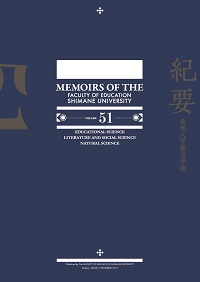島根大学教育学部
ISSN:2433-5355(オンライン)
ISSN:1880-8581(冊子体)
なお、冊子体の刊行は50号まで
ISSN:1880-8581(冊子体)
なお、冊子体の刊行は50号まで

ダウンロード数 : ? 件
この文献の参照には次のURLをご利用ください : https://ir.lib.shimane-u.ac.jp/7162
島根大学教育学部紀要 44
2010-12-24 発行
直感への抵抗 : 数学的考察におけるビジュアル教材の排除についての一考察
Against the Tyranny of the Senses : Banning the Visual Aids from Mathematical Argumentation
百合田 ビオレタ
ファイル
内容記述(抄録等)
In this paper I highlight an essential distinction between the Euclidean deductive method and the axiomatic method and I present some implications for the pedagogy of proof in school geometry. In particular, I examine the role of visualization and visual representations in the Euclidean deductive method and the axiomatic method. Further, considering how proof is canonically taught in schools, I propose that visual representations are not merely pedagogical props. Instead, I argue that visuals are essential bricks that shape the proof process in geometry classrooms. Therefore, this paper cautions about projecting the ideal of rigorous proofs independent of visual representations to students, when the Euclidean deductive method is used for proving.
Other Article
